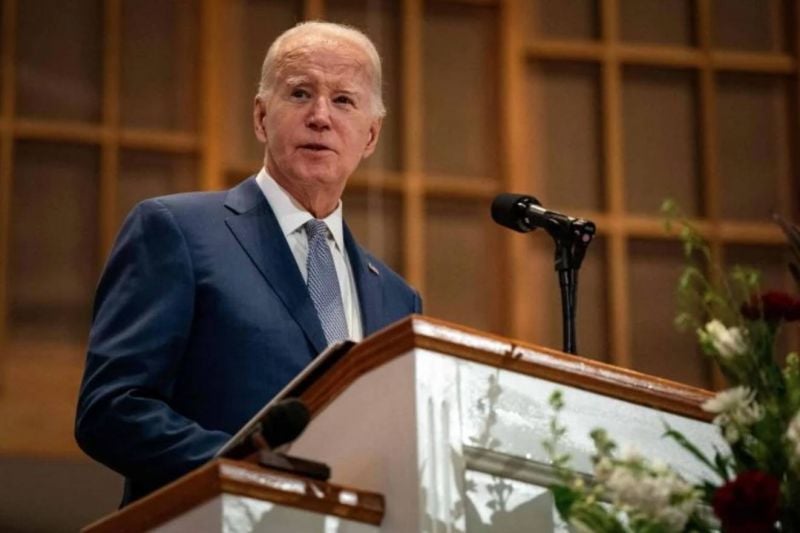
US President Joe Biden yesterday in South Carolina. (Photo Kent Nishimura / AFP)
For weeks observers have been speculating about the risk of regional conflagration in the Middle East. This risk has reached a new peak in the last few days.
For the first time since Hamas’ Oct.7 attack, this weekend a drone strike attributed to Iran-backed militias left three US soldiers dead and 25 wounded in Jordan. Amman denied that the strike took place on its territory and insisted that it targeted the base at al-Tanf in Syria. But the number of casualties and the specific target has increased the risk of regional escalation, amid the extreme tensions experienced on several fronts for nearly four months.
The situation in the region has already flared up, with conflicts of varying intensity currently underway in Gaza, on the Lebanese-Israeli border, Syria, Iraq, the Red Sea, and Yemen.
While neither the US nor Iran wants to get involved in a full-scale war, the two players have been playing with fire for weeks, striking back blow for blow, and taking closer and closer steps towards the abyss every day.
Iran and its allies were dealt several slaps in the face in recent months, with the assassination of Razi Mousavi, a pillar of the Revolutionary Guard in Syria, Saleh al-Arouri, Hamas’ deputy chief, and several top Hezbollah officials. Hezbollah has lost no fewer than 171 men since the start of the fighting with Israel.
But this does not seem to have had any deterrent effect on the Iranian axis. Rather, the latter seems to be “gauging” its retaliations to Israel — as has been happening from South Lebanon — while withholding its blows against Uncle Sam.
The Shiite militias operating in Syria and Iraq, as well as the Houthis, have stepped up attacks on US targets since Oct.7.
Iran can afford to accumulate setbacks on the ground — as long as they do not affect it directly — if it feels it is winning strategically.
The US’s inability to affirm its potential to deter the Iran-aligned militias and the US desire to repatriate its soldiers from Syria and Iraq are perceived by the Islamic Republic as signs of weakness to be taken advantage of, either by forcing Washington to withdraw from its “zone of influence” (Lebanon-Syria-Iraq-Yemen), or by pushing it to recognize, via a diplomatic agreement, its status as a dominant power in the region.
All the wrong options
With its back against the wall, the Biden administration is in a very delicate position, ironically, not unlike that of Hezbollah after the assassination of Saleh al-Arouri. The most radical voices are calling on Joe Biden to strike Iran directly, which they believe is the only way to reaffirm the deterrent capacity of the world’s leading power.
However, such a decision would entail the risk of a large-scale war, which the US President, who has been seeking to disengage from the region, is keen on avoiding at the start of a tough election year.
Striking Iran implies running the risk of an escalation at all fronts, which could affect the US and its allies, particularly Israel.
Nevertheless, retaliating in Syria and Iraq — since Biden has already warned that there will be a response — means risking not sending a message strong enough for the Iranian axis to cease its attacks.
The Biden administration is faced with a choice that involves nothing but bad options. This situation is the outcome of its unconditional support for Israel since the start of the war in Gaza, the US intervention in Iraq in 2003, which handed the country to Iran on a platter, and Washington’s desire to disengage from the Middle East for the past 10 years, leaving the way clear for Iran to develop a network of militias capable of plunging the region into a bloodbath.
The US has opted for “turning a blind eye,” or at least underestimated the Iranian threat in Syria, Iraq, Lebanon and Yemen for over a decade, and this strategy is backfiring at the worst possible time. Biden wanted to disconnect Gaza from the rest of the region since Oct. 7, and this is leading to a general failure.
While the “resistance axis” seems to have taken a risk in killing US soldiers, it is probably driven by the conviction that Washington will retaliate in Syria and Iraq.
Any other action taken by the Biden administration would be surprising since it would imply the possibility of open war with the Islamic Republic.
However, Iran, which is approaching the nuclear threshold, has much more to lose than the US, if things were to spiral out of control.
Although the militias that make up the Iranian axis are seen as its life insurance, they may not be enough to ensure the regime’s survival in the event of open war with the world’s leading power.
This article was originally published in French in L'Orient-Le Jour. Translation by Joelle El Khoury.